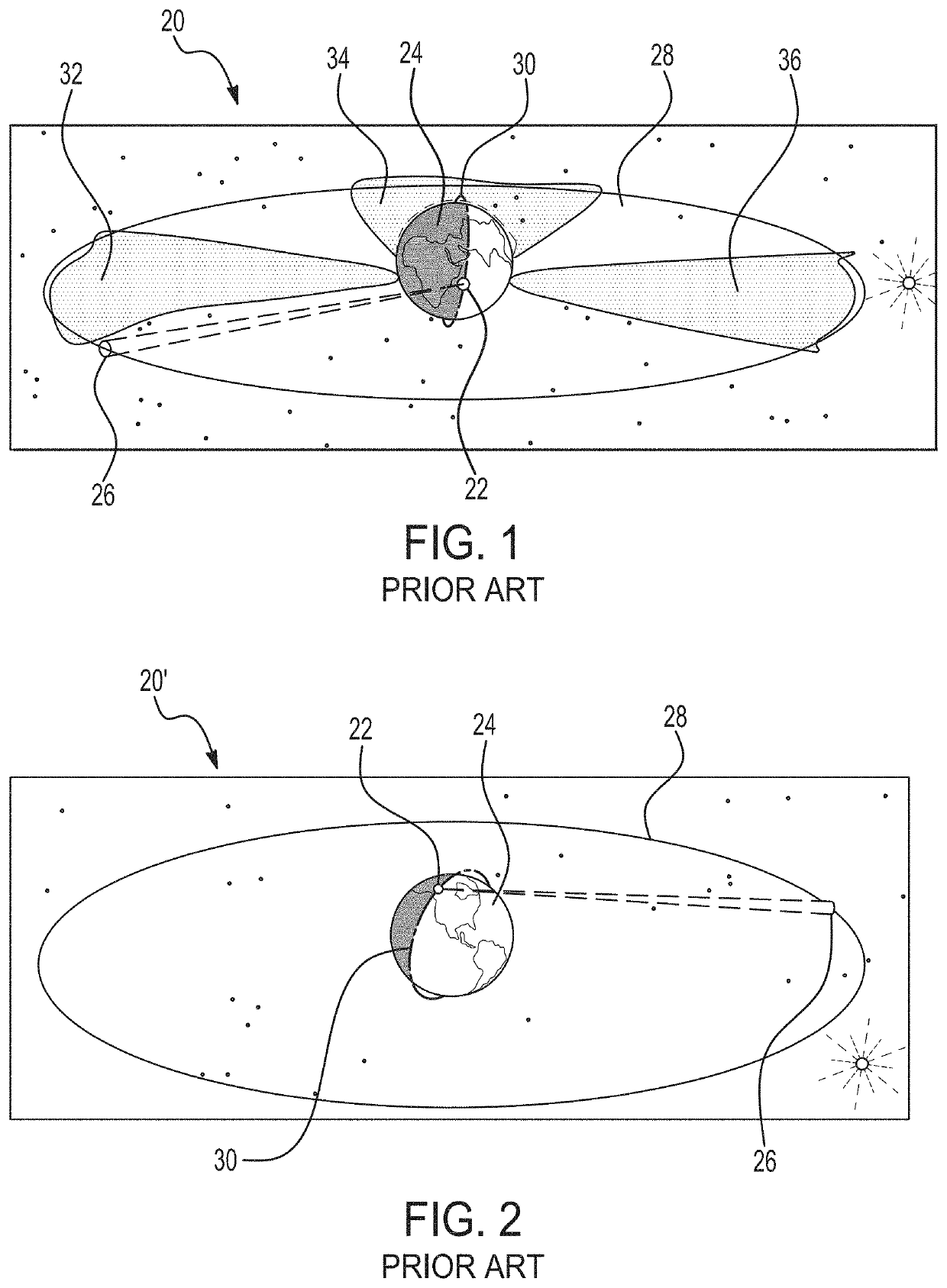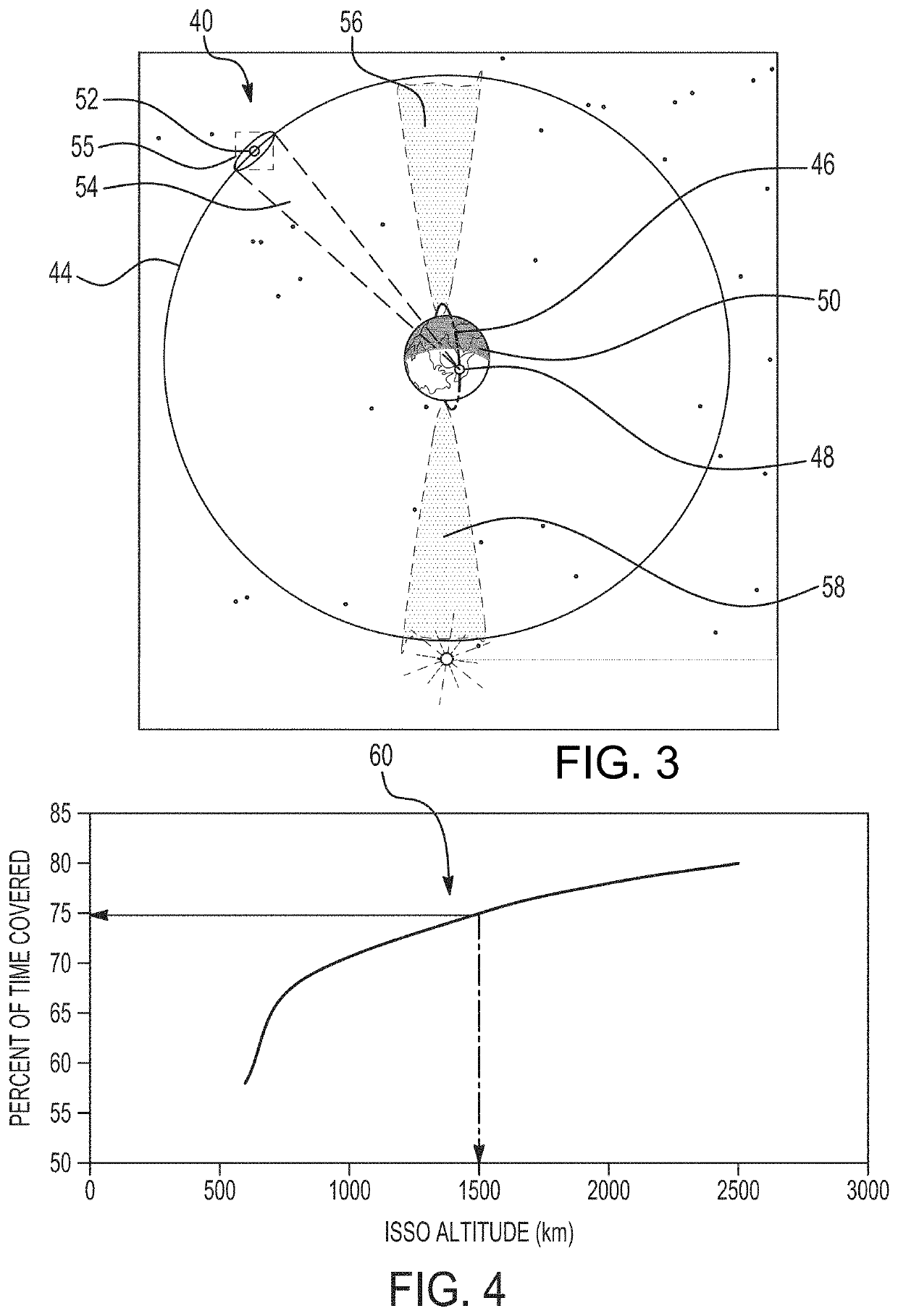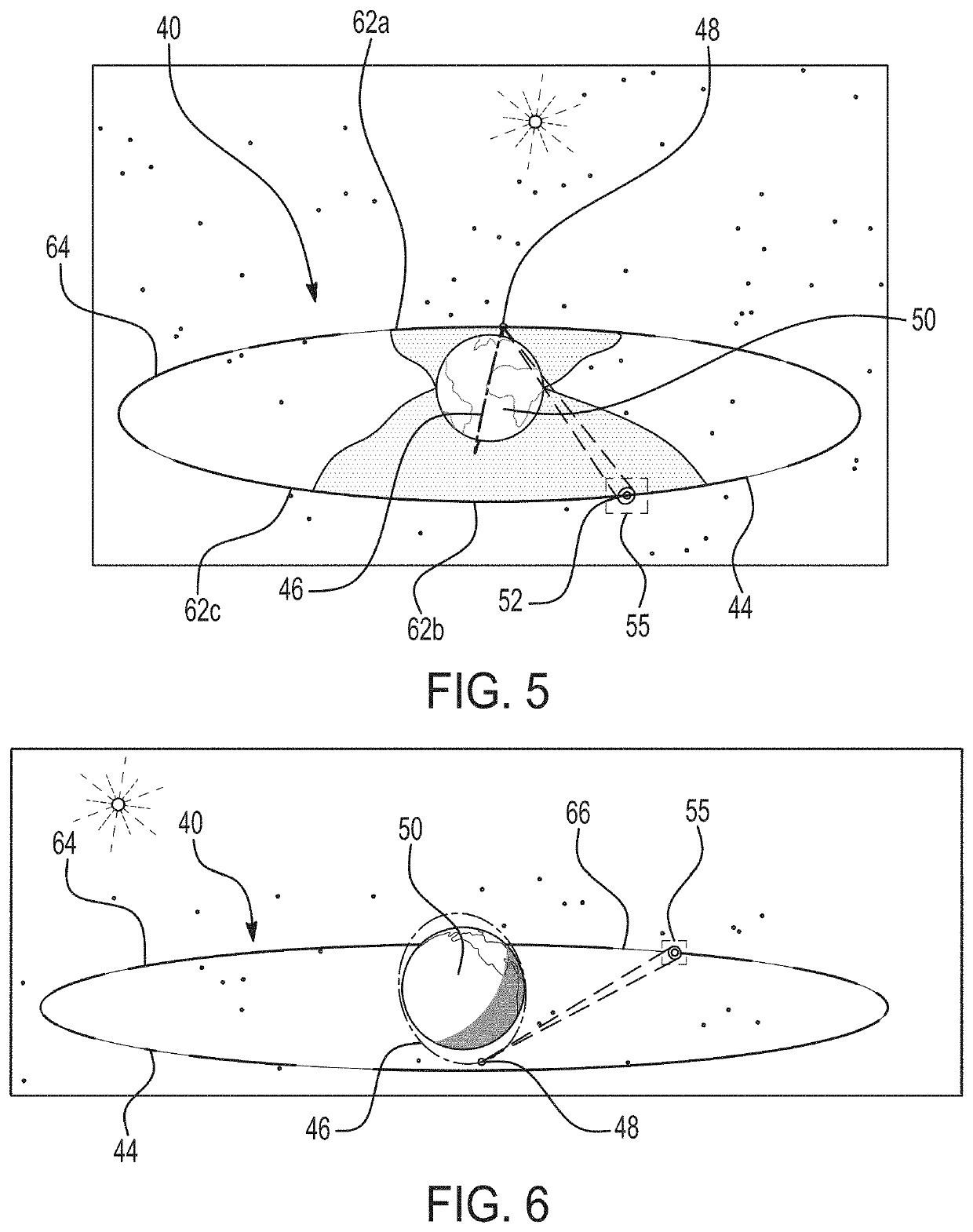Space surveillance orbit
a space surveillance and orbit technology, applied in the field of satellites, can solve the problems of limited leo/meo/geo coverage of rsos, slow revisit rate, deficient approach, etc., and achieve the effect of improving the observation coverage time and revisit rate, and reducing the number of exclusion regions
- Summary
- Abstract
- Description
- Claims
- Application Information
AI Technical Summary
Benefits of technology
Problems solved by technology
Method used
Image
Examples
Embodiment Construction
[0048]The principles described herein have particular application in space situational awareness (SSA) systems and more specifically, to systems and methods for observing Resident Space Objects (RSOs). Observing RSOs includes detection, tracking, identification, imaging for characterization, tactical warning, and attack assessment, by a satellite system with an electro-optical sensor in a sun synchronous orbit (SSO) with a noon / midnight orbit. The principles described herein are applicable to military, civil, commercial and intelligence applications that use satellite systems for various functions. Tracking of space debris for collision avoidance, anti-satellite countermeasures, monitoring space weather effects, tracking near Earth orbit objects for impact predictions, space defense, and foreign satellite warfare may all be suitable applications.
[0049]Any suitable satellite may be implemented in the satellite system described herein. The satellite system may include any sensor arran...
PUM
 Login to View More
Login to View More Abstract
Description
Claims
Application Information
 Login to View More
Login to View More - R&D
- Intellectual Property
- Life Sciences
- Materials
- Tech Scout
- Unparalleled Data Quality
- Higher Quality Content
- 60% Fewer Hallucinations
Browse by: Latest US Patents, China's latest patents, Technical Efficacy Thesaurus, Application Domain, Technology Topic, Popular Technical Reports.
© 2025 PatSnap. All rights reserved.Legal|Privacy policy|Modern Slavery Act Transparency Statement|Sitemap|About US| Contact US: help@patsnap.com



